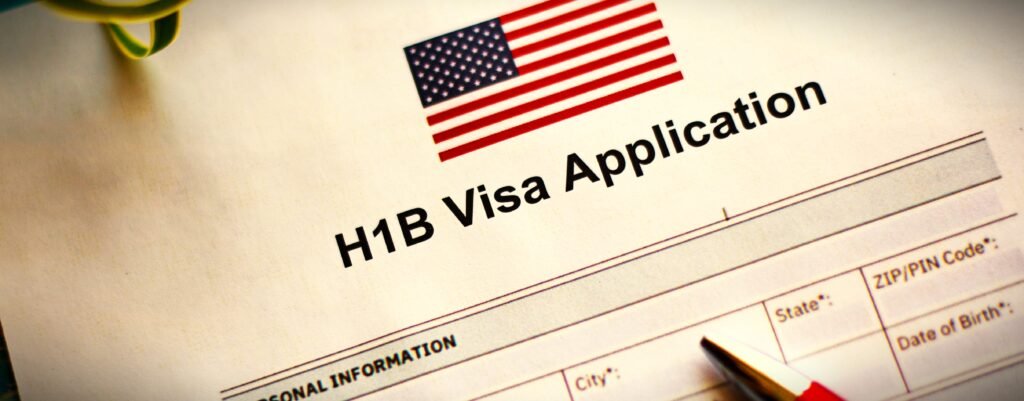For years, Ramesh had been working tirelessly as a software engineer in India. When a U.S.-based tech giant reached out with a job offer, it felt like everything he’d worked for was finally paying off. But figuring out how to get H1B visa approval was another mountain to climb. His employer filed his petition just in time for the lottery deadline, and a few months later, his name was selected. Today, he’s leading projects from the company’s headquarters in Seattle, a move that transformed his career and life.
If you’re dreaming of a similar journey, you need more than just luck. The H1B visa process is competitive, but with preparation and the right approach, you can make it happen. Let’s break it down step by step.

What Is an H1B Visa?
The H1B visa is a temporary work visa for skilled professionals. It allows U.S. companies to hire foreign workers in specialized roles such as technology, finance, engineering, and medicine. Unlike other visas, the H1B is employer-sponsored: you can’t apply without a valid job offer from a U.S. company.
Each year, the government issues up to 85,000 H1B visas: 65,000 for regular applicants and 20,000 reserved for those with advanced U.S. degrees. But demand far exceeds supply, and the process starts with a lottery. Understanding how to get H1B visa approval isn’t just about qualifying—it’s about knowing how to stand out.
Step 1: Ensure You Meet the Requirements
Before you dive in, make sure both you and your employer meet the eligibility criteria.
For Applicants:
- A Job Offer in a Specialized Field: The position must require specialized skills or knowledge.
- Educational Qualifications: A bachelor’s degree or higher in a relevant field is typically required. Equivalent work experience (3 years for every year of missing education) may also qualify.
- Specialized Skills: Your job must align with your education and expertise, such as software development, healthcare, or engineering.
For Employers:
- Prove the Role Requires Specialized Knowledge: Employers must justify why the position needs someone with your expertise.
- Pay the Prevailing Wage: The employer must agree to pay the standard wage for the role in your geographic area.
- File a Labor Condition Application (LCA): This document ensures hiring you won’t negatively affect U.S. workers.
Step 2: Secure a Job Offer
The H1B visa process starts with your employer. Without a job offer, you can’t move forward. U.S. companies experienced in H1B sponsorships are often your best bet—they know how to handle the paperwork and meet deadlines.
Pro Tip: Make Your Resume Stand Out
Focus on your specialized skills and achievements. U.S. employers are looking for candidates who bring something unique to the table.
Step 3: The H1B Lottery
Because the demand for H1B visas far exceeds the supply, the U.S. government uses a random lottery to select applicants.
Here’s how it works:
- Employers submit your petition during the filing window (usually in March).
- USCIS conducts the lottery and selects petitions until the cap is met.
- If selected, your application moves forward. If not, you can try again next year.
The lottery can feel like a gamble, but preparation and persistence increase your chances.
Step 4: File the Petition
If selected in the lottery, your employer will file Form I-129 (Petition for a Nonimmigrant Worker) with USCIS. This includes:
- A copy of your job offer letter.
- Documentation of your qualifications (e.g., degrees, certifications).
- The approved Labor Condition Application.
Attention to detail is critical here. A small error or missing document can delay or derail your application.
Step 5: Attend the Visa Interview

If your petition is approved, you’ll need to attend an interview at a U.S. consulate or embassy in your home country. This is where you prove your eligibility and explain your plans in the U.S.
Tips for Success:
- Dress Professionally: Treat it like a job interview.
- Be Honest: Answer questions clearly and truthfully.
- Bring All Required Documents: Including your passport, job offer letter, and USCIS approval notice.
Step 6: Life After the H1B
Once you’ve secured your H1B visa, your journey doesn’t end there. You have responsibilities to maintain your status:
- Stay Employed with Your Sponsor: Working for another employer without authorization violates visa terms.
- Renew Your Visa as Needed: H1B visas are typically valid for up to six years (initial three years with extensions).
- Plan for the Future: Many H1B holders use the visa as a pathway to permanent residency (green card).
Common Mistakes to Avoid
Mistakes can derail your H1B application. Here’s how to stay on track:
- Missing Deadlines: The H1B filing window is short, and missing it means waiting another year.
- Relying on Inexperienced Employers: If your employer doesn’t understand the process, mistakes can happen.
- Not Following Visa Conditions: Stay compliant with the terms of your visa to avoid complications.
Why Start Now?
Every year, the competition for H1B visas grows. Waiting only reduces your chances. If you’re serious about working in the U.S., start preparing now.
The H1B visa process isn’t just about luck. It’s about preparation, persistence, and knowing exactly how to get H1B visa approval. With the right steps and determination, you can turn your dream into reality.
